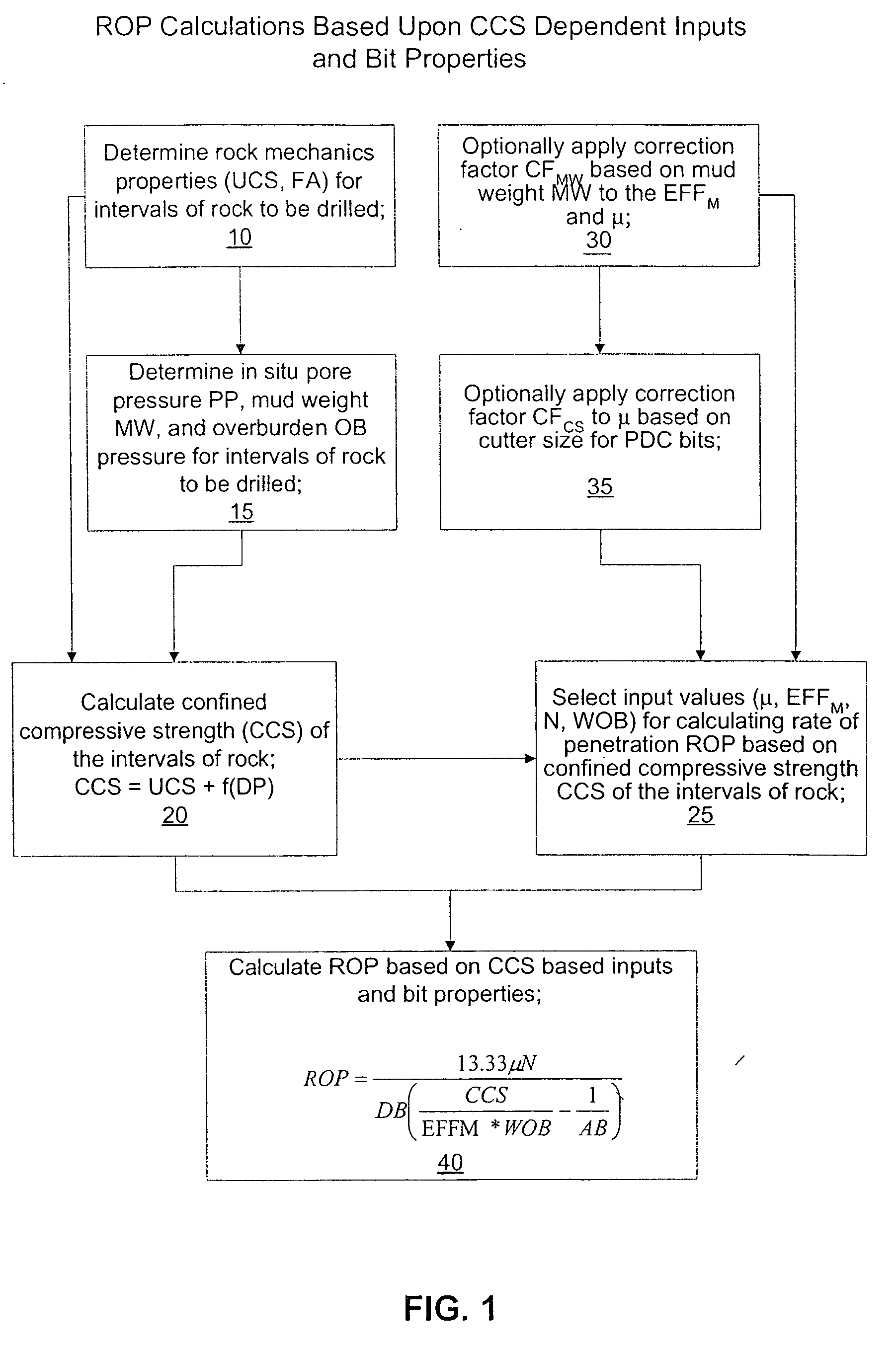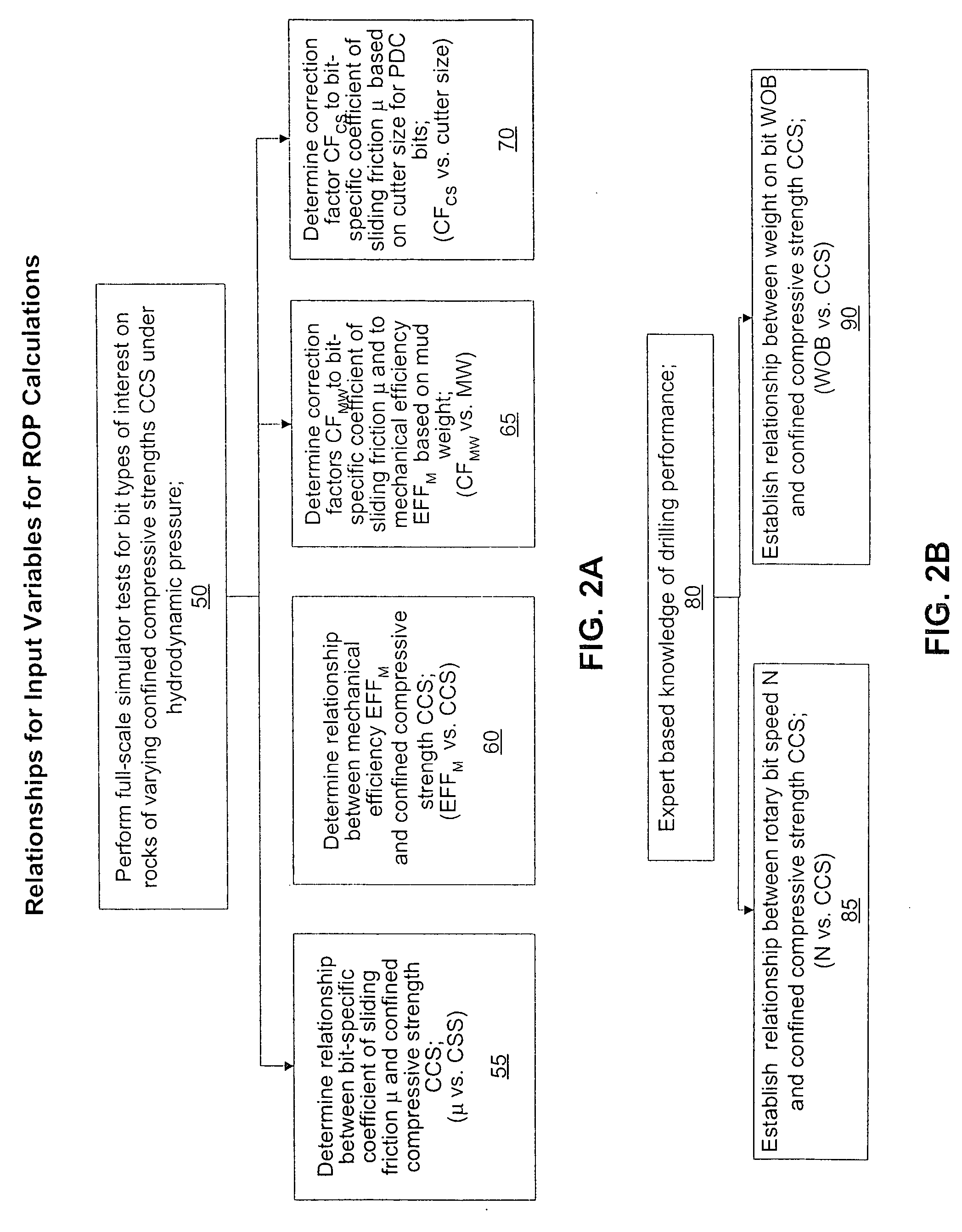Method for predicting rate of penetration using bit-specific coefficient of sliding friction and mechanical efficiency as a function of confined compressive strength
- Summary
- Abstract
- Description
- Claims
- Application Information
AI Technical Summary
Benefits of technology
Problems solved by technology
Method used
Image
Examples
examples
[0192] The field test examples presented below illustrate how the CCS and specific ROP models may be used to improved drilling performance by reducing both drilling time and drilling costs. This performance is achieved by selecting the optimum drill bits and drilling parameters for each application.
Well 1
[0193]FIG. 13 shows the drilling performance for a specific interval composed mainly of dolomite in which the ROP has been very low (approximately 1 meter / hour) with roller cone bits (TCI), heavy set PDC bits, and impregnated bits (IMPREG). Analysis indicates that CCS ranged from about 20,000 psi to 35,000 psi.
[0194] Track 5 provides an example of the correlation between the predicted ROP to the actual ROP for all bit types used to drill the interval. Predicted ROP is calculated using actual drilling parameters (WOB, RPM) from actual bit runs shown in Track 4. Track 3 shows the actual bits used and their dull grades. Track 6 illustrates the potential ROP for Insert bits (TCI medi...
PUM
 Login to View More
Login to View More Abstract
Description
Claims
Application Information
 Login to View More
Login to View More - R&D
- Intellectual Property
- Life Sciences
- Materials
- Tech Scout
- Unparalleled Data Quality
- Higher Quality Content
- 60% Fewer Hallucinations
Browse by: Latest US Patents, China's latest patents, Technical Efficacy Thesaurus, Application Domain, Technology Topic, Popular Technical Reports.
© 2025 PatSnap. All rights reserved.Legal|Privacy policy|Modern Slavery Act Transparency Statement|Sitemap|About US| Contact US: help@patsnap.com



